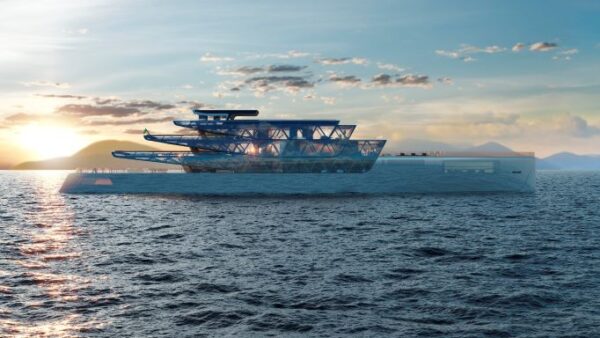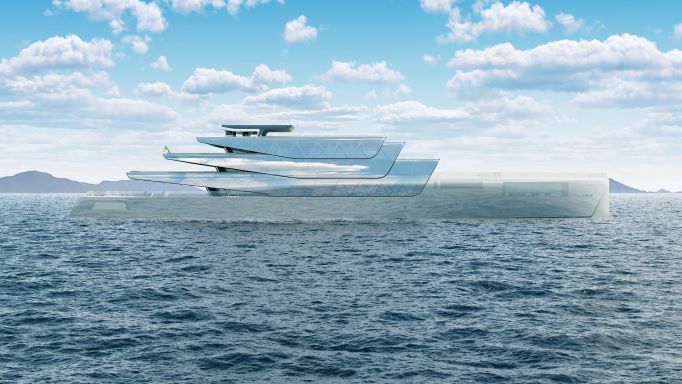Jozeph Forakis presents “Pegasus” the invisible, 3-D printed, superyacht
The new design by Jozeph Forakis is called “Pegasus”, and it has a “winged” superstructure created using mirrored glass

The new design by Jozeph Forakis is called “Pegasus”, and it has a “winged” superstructure created using mirrored glass
After the world première of his multi-award winning CLX96 at FLIBS 2022, the internationally renowned designer, Jozeph Forakis, has presented yet another futuristic design. This is the “Pegasus”, an innovative 88 metre superyacht which should be available on the market in 2030.
Like the famous winged horse of Greek mythology, this Pegasus also has its own “wings”, creating a singular connection with the surrounding environment. The vessel’s entire superstructure, including the “wings”, is built using a special mirrored glass, capable of reflecting its surroundings.
“For this design – explains Forakis – I wanted to honour nature, melding with her and becoming practically invisible.” Starting from this concept, the designer created an “invisible” yacht, both in design and in environmental impact. When it is working, Pegasus will have zero carbon emissions and practically unlimited autonomy.
The solar power produced by the panels will be used to transform sea water into hydrogen. The fuel cells on board will convert part of the hydrogen into electricity, which will be stored in lithium-ion batteries.
THE INVISIBLE SUPERYACHT
The exterior design begins with a low and linear hull, a perpendicular bow and silver metallic finish. These light tones are perfectly in line with the chameleon-like characteristics of the vessel. The hull then supports a special superstructure with its famous glass “wings” on each deck.
ROBOTIC 3D PRINTING
In order to make this yacht, Forakis and his team didn’t stop at just aesthetics. Perhaps the most innovative part of the “Pegasus” is its technology. Construction is based on robotic 3-D printing. This technical innovation, in addition to providing excellent results, uses less energy and less material compared to conventional construction techniques.
3-D printing will be used to print the entire mesh configuration to be used to integrate the hull and superstructure. The webbed configuration will also allow light to enter at all levels of the interior.
THE TREE OF LIFE: A MONUMENT TO MOTHER NATURE
The interior design of “Pegasus” is centred around the “Tree of Life”. This is a tree extending over all four decks of the yacht, surrounded by a sculpted spiral staircase. The base starts off from a pool on the lower deck surrounded by a Zen garden.
Going up to the Main deck are spacious rooms with a minimalist design and with light tones. A solution that fully allows passengers to enjoy the view and is in line with the natural elements found inside. The upper deck has been created specifically for the owner’s use, with a forward-facing master suite and a large private terrace.
The pool club on the bow has an Olympic-sized swimming pool with large horizontal windows transforming into balconies opening to the port and starboard sides. When it is closed, the pool cover works as a heliport. To the stern is an elegant beach club with a jacuzzi and collapsible balconies. Thanks to sliding glass panels on the ceiling and along the bulkheads, this area can also be transformed into an enclosed solarium if needed.
Topics: 3-D printing, Jozeph Forakis












